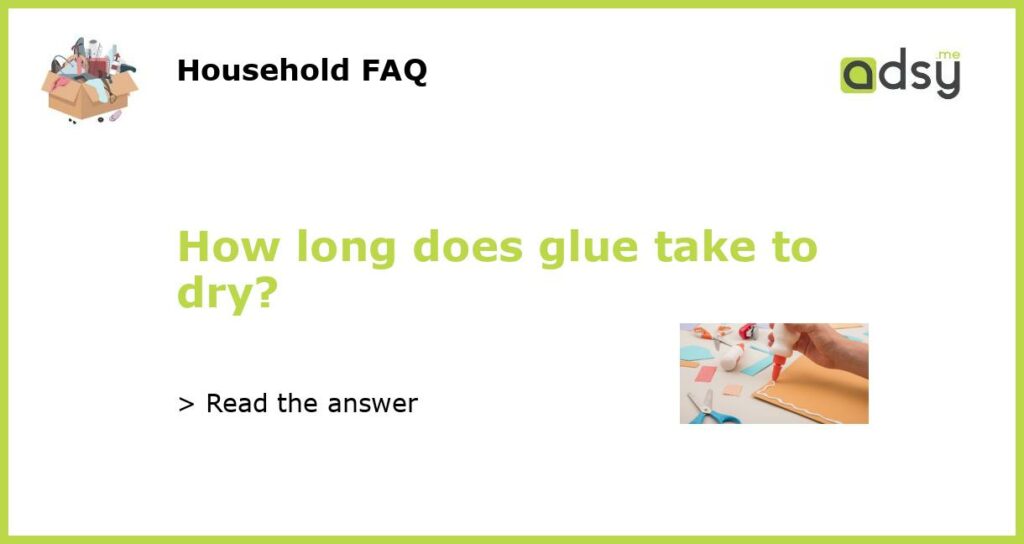Glue Drying Times: What You Need to Know
Glue is a handy adhesive that is used in various applications, from crafts to home repairs. Whether you are working on a DIY project or fixing something around the house, it is important to know how long glue takes to dry. The drying time of glue can vary depending on several factors, such as the type of glue, humidity levels, and the materials being bonded. In this article, we will explore the different types of glue and their drying times, so you can plan your project accordingly.
Understanding the Different Types of Glue
There are several types of glue available on the market, each designed for specific applications. Some common types of glue include:
- White glue: Also known as school glue or PVA glue, this type of glue is water-soluble and dries clear. It is commonly used for crafts and paper projects.
- Super glue: Super glue, also called cyanoacrylate adhesive, is a fast-drying adhesive that forms a strong bond. It is commonly used for bonding metal, plastic, and rubber.
- Wood glue: This type of glue is specifically formulated for woodworking projects. It forms a strong bond and can be sanded and painted over once dry.
- Epoxy: Epoxy glue is a two-part adhesive that consists of a resin and a hardener. It creates a strong bond and is commonly used for bonding metal, glass, and plastics.
Factors Affecting Glue Drying Time
The drying time of glue is influenced by various factors, including:
- Type of glue: Different types of glue have different drying times. For example, super glue dries within seconds, while epoxy glue may take several hours to cure.
- Humidity: High humidity levels can slow down the drying time of glue, while low humidity levels can speed it up.
- Temperature: Glue tends to dry faster in warmer temperatures and slower in colder temperatures.
- Materials being bonded: The type and porosity of the materials being bonded can also affect the drying time of glue. Porous materials may absorb the glue and slow down the drying process.
Average Drying Times for Common Glues
While the drying time can vary depending on the factors mentioned above, here are approximate drying times for common glues:
- White glue: White glue typically dries within 1 to 24 hours, depending on the thickness of the application and the humidity levels.
- Super glue: Super glue dries within seconds to a few minutes. However, it may take up to 24 hours to reach its full strength.
- Wood glue: Wood glue usually dries within 30 minutes to 24 hours. It is recommended to clamp the glued parts together for optimal bonding.
- Epoxy glue: Epoxy glue may take anywhere from 5 minutes to 24 hours to cure, depending on the specific brand and formulation.
Tips for Speeding Up Glue Drying Time
If you are in a hurry and need the glue to dry faster, here are some tips:
- Use a fast-drying glue: Opt for a glue that is specifically designed for quick drying.
- Apply a thin layer of glue: Thicker applications of glue take longer to dry. Use only the amount of glue necessary for the project.
- Use a fan or heat source: Increasing air circulation or applying gentle heat can speed up the drying process.
- Choose a low-humidity environment: If possible, work in a dry environment with low humidity levels.
Testing the Bond
It is important to note that even though glue may appear dry on the surface, it may still be curing and developing its full strength. Before subjecting the glued objects to stress or weight, it is advisable to wait at least 24 hours or follow the manufacturer’s instructions for optimal drying and bonding.
In conclusion, the drying time of glue depends on various factors, including the type of glue, humidity levels, temperature, and materials being bonded. Understanding these factors and following the recommended drying times will ensure a strong and durable bond for your projects.






